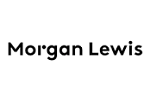Service objectives
The following list represents the Key Service Objectives (KSO) for the Appleton Greene Organizational Change service.
Change Management
In order to grow and  survive we must change as our environment requires. Those companies that adapt to change are the ones that survive – for generation after generation. The impetus for change can vary – M&A activities, high growth environments or the evolution of strategy. As a discipline, change management has been around for decades. It is a constant at the largest and most respected consulting companies. It has become core course study at the most notable business schools. Yet, it continues to be the undoing of many companies. Change management requires discipline, focus and dedication to the plan for change. My goal is to gently guide the company through the steps of change ensuring a positive outcome. I remain respectful of company culture – it need not change. I am respectful of the values of the Company and strive to reinforce areas of strength and work only on areas of change, which guarantees continuity in business and the sustainability of any project. I work side by side with change proponents and thought leaders until we can reach not only a business success but also an increase in motivation and dedication of the employee base, evidence of long term success in this endeavor. All companies, large and small can benefit.
survive we must change as our environment requires. Those companies that adapt to change are the ones that survive – for generation after generation. The impetus for change can vary – M&A activities, high growth environments or the evolution of strategy. As a discipline, change management has been around for decades. It is a constant at the largest and most respected consulting companies. It has become core course study at the most notable business schools. Yet, it continues to be the undoing of many companies. Change management requires discipline, focus and dedication to the plan for change. My goal is to gently guide the company through the steps of change ensuring a positive outcome. I remain respectful of company culture – it need not change. I am respectful of the values of the Company and strive to reinforce areas of strength and work only on areas of change, which guarantees continuity in business and the sustainability of any project. I work side by side with change proponents and thought leaders until we can reach not only a business success but also an increase in motivation and dedication of the employee base, evidence of long term success in this endeavor. All companies, large and small can benefit.
Process Development
Operations and process improvement enables organizations to  increase effectiveness by understanding, optimizing and aligning activities and processes to maximize output and returns on improvement initiatives. Through the integration of people, process and technology, organizations can make more effective decisions, increase stakeholder value and drive higher levels of efficiency organization-wide. It is critical success factor for organizations to improve the performance of their personnel and operational processes. Operations improvement can require new resources, thinking, new methods and new techniques for monitoring and measuring so organizations can fully understand, optimize and align processes to achieve strategic objectives. This service is designed to gently guide the company through the steps of change to ensure a positive outcome.
increase effectiveness by understanding, optimizing and aligning activities and processes to maximize output and returns on improvement initiatives. Through the integration of people, process and technology, organizations can make more effective decisions, increase stakeholder value and drive higher levels of efficiency organization-wide. It is critical success factor for organizations to improve the performance of their personnel and operational processes. Operations improvement can require new resources, thinking, new methods and new techniques for monitoring and measuring so organizations can fully understand, optimize and align processes to achieve strategic objectives. This service is designed to gently guide the company through the steps of change to ensure a positive outcome.
Mergers & Acquisitions
The intent of this service is not to determine whether any one or more acquisitions is strategic for the  company. Rather, the focus is on making the acquisition and post-closing operations a success. People often quote statistics that claim that 90% of all M&A transactions fail. By many measures that is accurate. But transactions continue to occur. This service significantly increases the likelihood that your acquisition will fall in the 10% that succeed. To start we assemble an internal team to perform due diligence on the acquired company to first identify those areas of process where differences exist. Once identified, the team can focus on those aspects that require change in order to have a smooth integration into the surviving company. With that information we can write a detailed plan to carefully integrate the business. Starting with clear communication plan and evolving to joint process development teams we will carefully bring along the acquired entity in a careful and less invasive way. In every successful M&A transaction the message is always one of inclusiveness with the end goal of complete alignment and success of the combined entity.
company. Rather, the focus is on making the acquisition and post-closing operations a success. People often quote statistics that claim that 90% of all M&A transactions fail. By many measures that is accurate. But transactions continue to occur. This service significantly increases the likelihood that your acquisition will fall in the 10% that succeed. To start we assemble an internal team to perform due diligence on the acquired company to first identify those areas of process where differences exist. Once identified, the team can focus on those aspects that require change in order to have a smooth integration into the surviving company. With that information we can write a detailed plan to carefully integrate the business. Starting with clear communication plan and evolving to joint process development teams we will carefully bring along the acquired entity in a careful and less invasive way. In every successful M&A transaction the message is always one of inclusiveness with the end goal of complete alignment and success of the combined entity.
Start-up Environment
In start-up and early stage companies life can be hectic. People focus more on how to  survive than whether to establish process. Everyone is a jack-of-all-trades, jumping in to whatever needs to be done. Customers can be added at alarming rates. Revenue can be skyrocketing. It seems like new people are coming on board every day. It is an exciting time. Yet with all this excitement and activity, inefficiency starts to creep in. Questions like – “who do I speak with about approving X” or who is handling customer Y’s issue” sometimes go unanswered. It’s time to grow up and act like a company and begin to establish clear process and procedures. Establishing process enables organizations to increase effectiveness by understanding, optimizing and aligning activities and processes to maximize output and returns on improvement initiatives. Through the integration of people, process and technology, organizations can make more effective decisions, increase stakeholder value and drive higher levels of efficiency organization-wide. It is critical success factor for organizations to improve the performance of their personnel and operational processes. Operations improvement can require new resources, thinking, new methods and new techniques for monitoring and measuring so organizations can fully understand, optimize and align processes to achieve strategic objectives. This service is designed to gently guide the company through the steps of change to ensure a positive outcome.
survive than whether to establish process. Everyone is a jack-of-all-trades, jumping in to whatever needs to be done. Customers can be added at alarming rates. Revenue can be skyrocketing. It seems like new people are coming on board every day. It is an exciting time. Yet with all this excitement and activity, inefficiency starts to creep in. Questions like – “who do I speak with about approving X” or who is handling customer Y’s issue” sometimes go unanswered. It’s time to grow up and act like a company and begin to establish clear process and procedures. Establishing process enables organizations to increase effectiveness by understanding, optimizing and aligning activities and processes to maximize output and returns on improvement initiatives. Through the integration of people, process and technology, organizations can make more effective decisions, increase stakeholder value and drive higher levels of efficiency organization-wide. It is critical success factor for organizations to improve the performance of their personnel and operational processes. Operations improvement can require new resources, thinking, new methods and new techniques for monitoring and measuring so organizations can fully understand, optimize and align processes to achieve strategic objectives. This service is designed to gently guide the company through the steps of change to ensure a positive outcome.
Process Reengineering
As much as we like to think that all business run smoothly, sometimes we need a restart in certain areas. Earnings start to lag, revenue is down or costs are creeping up. In any of these cases the approach that we follow is objective, practical and focused. We start with a detailed analysis of any department and/or function determining why the company’s performance is less than optimal. Once identified, the team can focus on those aspects that require change and develop the methodology to accomplish it. Reengineering broken or outdated processes enables organizations to increase effectiveness by understanding, optimizing and aligning activities and processes to maximize output and returns on improvement initiatives. Through the integration of people, process and technology, organizations can make more effective decisions, increase stakeholder value and drive higher levels of efficiency organization-wide. It is critical success factor for organizations to improve the performance of their personnel and operational processes. Operations improvement can require new resources, thinking, new methods and new techniques for monitoring and measuring so organizations can fully understand, optimize and align processes to achieve strategic objectives. This service is designed to gently guide the company through the steps of change to ensure a positive outcome.
Earnings start to lag, revenue is down or costs are creeping up. In any of these cases the approach that we follow is objective, practical and focused. We start with a detailed analysis of any department and/or function determining why the company’s performance is less than optimal. Once identified, the team can focus on those aspects that require change and develop the methodology to accomplish it. Reengineering broken or outdated processes enables organizations to increase effectiveness by understanding, optimizing and aligning activities and processes to maximize output and returns on improvement initiatives. Through the integration of people, process and technology, organizations can make more effective decisions, increase stakeholder value and drive higher levels of efficiency organization-wide. It is critical success factor for organizations to improve the performance of their personnel and operational processes. Operations improvement can require new resources, thinking, new methods and new techniques for monitoring and measuring so organizations can fully understand, optimize and align processes to achieve strategic objectives. This service is designed to gently guide the company through the steps of change to ensure a positive outcome.
This service is primarily available to the following industry sectors:

Technology
Technology is the collection of techniques, skills, methods and processes used in the production of goods or services or in the accomplishment of objectives, such as scientific investigation. What we often think of as “Technology” is really just the application of modern technology to our daily professional and personal lives. For example, what used to work before, might not be working now, it must have gotten old or been replaced by more modern technology. Technology simplifies life in so many ways and everyone defines technology in their own way. To some people, it means smartphones and laptops. To others, it means the source of the radical changes that are happening in all phases of life. Some define technology as science applied to practical purposes. Some people fear to use technology while others see it as the source of longer and more complete lives.
In this service offering, I consider the use of technology in only positive value added ways. For example, technology advancements have improved our access to and use of information across the enterprise, creating better evaluation opportunities to improve performance. It encourages innovation and creativity, placing the opportunity to develop new goods and services across more of your employee base. Technology has improved the ways we communicate, providing us with many more sources of knowledge and information. It also improves efficiency and production allowing companies to deliver ever more complex goods and services in new and innovative ways. It is the combination of people, process and technology that allows us to become successful.

Energy
My focus in the energy space is towards renewable/sustainable fuels, energy efficiency and waste-to-energy. Energy efficiency and renewable energy are the twin pillars of a sustainable energy future. Considerable progress is being made in the energy transition from fossil fuels to sustainable systems technologies that promote sustainable energy, include renewable energy sources, such as hydroelectricity, solar energy, wind energy, wave power, geothermal energy, bioenergy, tidal power and also technologies designed to improve energy efficiency. Costs have fallen dramatically in recent years, and continue to fall. Most of these technologies are either economically competitive or close to being so. Increasingly, effective government policies are supporting the transition to these alternatives. This sets sustainable energy apart from other renewable energy terminology such as alternative energy by focusing on the ability of an energy source to continue providing energy. Sustainable energy can produce some pollution of the environment, as long as it is not sufficient to prohibit heavy use of the source for an indefinite amount of time. Sustainable energy is also distinct from low-carbon energy, which is sustainable only in the sense that it does not add to the CO2 in the atmosphere.

Consultancy
People have always needed advice on how better to manage their affairs and make effective decisions. Consultants can function as bridges for information and knowledge, and external consultants can provide these bridging services more economically than client firms themselves. The functions of consulting services are commonly broken down into the following task categories: strategic management, operations management, industrial engineering, industrial/organizational psychology, organizational development, and project management. Consultants have specialized skills on tasks that would involve high internal coordination costs for clients, such as organization-wide changes or the implementation of information technology. In addition, because of economies of scale, their focus and experience in gathering information worldwide and across industries renders their information search less costly than clients trying to procure this information and knowledge themselves. Technological developments, emerging opportunities, and evolving policies are driving evolutionary as well as potentially disruptive changes in the current environment. organizations and businesses will continue to need and rely upon qualified consultants to assist them in their adaptation to the changing world.

Internet
The Internet is the global system of interconnected computer networks that use the Internet protocol suite (TCP/IP) to link devices worldwide. It is a network of networks that consists of private, public, academic, business, and government networks of local to global scope, linked by a broad array of electronic, wireless, and optical networking technologies. The Internet allows greater flexibility in working hours and location, especially with the spread of unmetered high-speed connections. The Internet can be accessed almost anywhere by numerous means including wirelessly.
The low cost and nearly instantaneous sharing of ideas, knowledge, and skills have made collaboration dramatically easier. Not only can a group cheaply communicate and share ideas but the wide reach of the Internet allows such groups more easily to form. The Internet allows computer users to remotely access other computers and information stores easily from any access point. This is encouraging new ways of working from home, collaboration and information sharing in many industries. An office worker away from their desk, perhaps on the other side of the world on a business trip or a holiday, can access their emails, access their data using cloud computing, or open a remote desktop session into their office PC using a secure virtual private network (VPN) connection on the Internet. This can give the worker complete access to all of their normal files and data, including email and other applications, while away from the office. Business across the Internet or e-business encompasses business processes spanning the entire value chain: purchasing, supply chain management, marketing, sales, customer relationship management and customer service. E-commerce seeks to add revenue streams using the Internet to build and enhance relationships with clients and partners. According to IDC, the size of worldwide e-commerce, when global business-to-business and –consumer transactions are combined, equate to $16 trillion for 2013. A report by Oxford Economics adds those two together to estimate the total size of the digital economy at $20.4 trillion, equivalent to roughly 13.8% of global sales.

Manufacturing
Manufacturing remains a critical force in both advanced and developing economies. But the sector has changed, bringing new opportunities and challenges to business leaders and policy makers. The global manufacturing sector has undergone a tumultuous decade: large developing economies leaped into the first tier of manufacturing nations, a severe recession choked off demand, and manufacturing employment fell at an accelerated rate in advanced economies. Still, manufacturing remains critically important to both the developing and the advanced world. In the former, it continues to provide a pathway from subsistence agriculture to rising incomes and living standards. In the latter, it remains a vital source of innovation and competitiveness, making outsized contributions to research and development, exports, and productivity growth. But the manufacturing sector has changed—bringing both opportunities and challenges—and neither business leaders nor policy makers can rely on old responses in the new manufacturing environment. Manufacturing’s role is changing. The way it contributes to the economy shifts as nations mature: in today’s advanced economies, manufacturing promotes innovation, productivity, and trade more than growth and employment. In these countries, manufacturing also has begun to consume more services and to rely more heavily on them to operate. Globally, manufacturing continues to grow. It now accounts for approximately 16 percent of global GDP and 14 percent of employment. But the manufacturing sector’s relative size in an economy varies with its stage of development. We find that when economies industrialize, manufacturing employment and output both rise rapidly, but once manufacturing’s share of GDP peaks—at 20 to 35 percent of GDP—it falls in an inverted U pattern, along with its share of employment. The reason is that as wages rise, consumers have more money to spend on services, and that sector’s growth accelerates, making it more important than manufacturing as a source of growth and employment. Manufacturing is not monolithic. It is a diverse sector with five distinct groups of industries, each with specific drivers of success. No two manufacturing industries are exactly alike; some are more labor- or more knowledge-intensive. Some rely heavily on transportation, while for others, proximity to customers is the critical issue.
Bronze Service

Monthly cost: USD $1,500.00
Time limit: 5 hours per month
Contract period: 12 months
Bronze service includes:
01. Email support
02. Telephone support
03. Questions & answers
04. Professional advice
05. Communication management

SERVICE DESCRIPTION
The Bronze Client Service (BCS) for Organizational Change provides clients with an entry level option and enables client contacts to become personally acquainted with Mr. Jackson over a sustainable period of time. We suggest that clients allocate up to a maximum of 5 Key Employees for this service. Your Key Employees can then contact the consultant via email, whenever they feel that they need specific advice or support in relation to the consultant’s specialist subject. The consultant will also be proactive about opening and maintaining communications with your Key Employees. Your Key Employees can list and number any questions that they would like to ask and they will then receive specific answers to each and every query that they may have. Your Key Employees can then retain these communications on file for future reference. General support inquiries will usually receive replies within 48 hours, but please allow a period of up to 10 business days during busy periods. The Bronze Client Service (BCS) enables your Key Employees to get to know their designated Appleton Greene consultant and to benefit from the consultant’s specialist skills, knowledge and experience.
Silver Service

Monthly cost: USD $3,000.00
Time limit: 10 hours per month
Contract period: 12 months
Bronze service plus
01. Research analysis
02. Management analysis
03. Performance analysis
04. Business process analysis
05. Training analysis

SERVICE DESCRIPTION
The Silver Client Service (SCS) for Organizational Change provides more time for research and development. If you require Mr. Jackson to undertake research on your behalf, or on behalf of your Key Employees, then this would understandably require more time and the Silver Client Service (SCS) accommodates this. For example, you may want your consultant to undertake some research into your management, performance, business, or training processes, with a view towards providing an independent analysis and recommendations for improvement. If any research and development, or business analysis is required, then the Silver Client Service (SCS) is for you.
Gold Service

Monthly cost: USD $4,500.00
Time limit: 15 hours per month
Contract period: 12 months
Bronze/Silver service plus
01. Management interviews
02. Evaluation and assessment
03. Performance improvement
04. Business process improvement
05. Management training

SERVICE DESCRIPTION
The Gold Client Service (GCS) for Organizational Change is intended for more detailed evaluation and assessment, that may require your Key Employees to have monthly meetings or interviews with Mr. Jackson. These meetings and interviews can be conducted over the telephone, Skype, or by video conference if required. The consultant can also attend your business premises, an Appleton Greene office, or another mutually beneficial location, but please note that clients are responsible for the costs of any disbursements separately, including travel and accommodation. This service enables you to integrate the specific skills, knowledge and experience of your designated consultant into your Key Employee management team. The Gold Client Service (GCS) can also incorporate training workshops, business presentations and external meetings with customers, suppliers, associations, or any other business-related stakeholders.
Platinum Service

Monthly cost: USD $6,000.00
Time limit: 20 hours per month
Contract period: 12 months
Bronze/Silver/Gold service plus
01. Project planning
02. Project development
03. Project implementation
04. Project management
05. Project review

SERVICE DESCRIPTION
The Platinum Client Service (PCS) for Organizational Change is our flagship service and will be required if you need Mr. Jackson to facilitate the planning, development, implementation, management, or review of a particular project relating to his specialist subject, which would obviously require more time and dedication. This service enables you to reserve up to 12.5% of the consultant’s working month and provides a more hands-on service as and when required. If you need more time than this, then this can always be arranged, subject of course to the consultant’s ongoing availability. The benefit of having an external consultant involved in projects is they provide an independent perspective and are not influenced by internal politics, day-to-day responsibilities, or personal career interest. They provide objectivity, specific knowledge, skills and experience and will be entirely focused upon the tasks at hand. The Platinum Client Service (PCS) will provide your organization with a valuable resource as and when you need it.
Benefits
Management
- Strategic Direction
- Resource Alignment
- Shared Vision
- Management Techniques
- Cohesive Workforce
- Reduced Costs
- Leadership Development
- Communication Skills
- Increased Profits
- Happier Employees
Globalization
- Complexity Management
- Workforce Integration
- Strategy Formulation
- Strategic Collaboration
- Mission Execution
- Increased Profits
- Reduced Variability
- Competitive Advantage
- Cost Control
- Cultural Alignment
Human Resources
- Corporate Effectiveness
- Organizational Efficiency
- Improved Retention
- Team Effectiveness
- Innovative solutions
- Reduced Uncertainty
- Improved Communication
- Solution Ownership
- Performance Improvement
- Employee Loyalty
Clients
This service’s current clients or employers include:

Zero Waste Energy
Zero Waste Energy is a strategic business partner who understands the new dynamics of the solid waste industry. Our company’s leadership has over 100 years of collective, real world industry experience. We provide clients with one-stop, holistic solutions to meet and exceed their waste needs, with an emphasis on developing unique business solutions, utilizing proven technology, and leveraging our professional resources to build measurable value and generate a solid Return on Investment for our clients . With our integrated solutions system, not only can we design, build and operate your waste management project, but we also have all the vital resources to make client projects successful from concept to permitting and from engineering to operations. We are the best project partner, with the experience, resources and technologies to execute your project. Zero Waste Energy’s team members have been closely involved in the design, development and operation of Material Recovery Facilities (MRF) for processing Municipal Solid Waste (MSW) since the introduction of MRFs in the mid-1980s. They understand how fully automated MSW Sorting Systems can provide a significant enhancement to traditional MRF operations by processing material that is typically bound for a landfill. It is estimated that as much as 30-40% of most municipal solid waste streams is potentially recoverable in the form of paper, plastics, wood, and metal, as well as an additional 35-40% in the form of organic materials. Comprehensive mixed solid waste processing systems employ sophisticated front-end sorting technology to recover commodities with value for resale or reuse. The remaining waste stream can be automatically segregated to isolate organics, providing feedstock for an anaerobic digestion system. A comprehensive waste processing system creates value by recovering additional commodities for sale, saving disposal and transportation costs, and preparing the organic fraction for use in an energy recovery process.
Zero Waste Energy – Click Here

Bekon Energy Technologies (Eggersmann)
Eggersmann is the first and only company in the recycling world that offers a complete product line of mobile and stationery recycling and composting machinery. We distribute products of well-known brands like BACKHUS, BRT HARTNER, Eggersmann, FORUS and Terra Select. We also deliver solutions for all kinds of processes, including but not only, composting, dosing, sorting, opening, shredding, screening and sifting. For customer convenience all of these products of each brand can be bought from any of our knowledgeable sales associates. Eggersmann offers individual attention specific to the client’s needs and a comprehensive distribution with complete support – from the first idea to the final product. Decades of experience and the know-how of the brands are incorporated into the worldwide operating of Eggersmann GmbH which guarantees impeccable results for our customers. The innovation of Eggersmann Anlagenbau accrues from the challenge to move something. As pioneers of development we have created technologies which form today the image of waste management with innovative plants for recycling and modern biogas plants. A wealth of experience in the mechanical and biological processes based on the broad spectrum of competence of the Eggersmann-group we are a member of the specialists for ideas in every field of MBT. Using innovative methods of achieving their own development systems from Eggersmann Anlagenbau are very efficient. Compact and modular construction solutions feature flexibility for new projects and for modernization and expansion of existing systems.
Bekon Energy Technologies (Eggersmann) – Click Here

Greenline Industries
Greenline Industries, Inc. manufactures biodiesel production, processing, and treatment equipment. It offers CF-Series biodiesel production units that produce ASTM D6751-compliant biodiesel from vegetable oil or animal fats; and resin and retrofit ion-exchange towers for waterless biodiesel production. The company also provides engineering and consulting services for the construction and management of biodiesel facilities. Its services include project consulting, general contracting, fuel brokerage, site selection, ground leveling, foundation laying, electrical power, buildings and other structures, plumbing, and equipment installation. In addition, the company offers a clean and waterless modular biodiesel production platform for small- to mid-scale production applications. Greenline serves biodiesel producers, fuel distributors, farm co-operatives, terminaling operators, and commercial plants in Eastern Europe, South America, Asia, and Africa. The company was founded in 2005 and is headquartered in Larkspur, California with additional offices in Germany, Romania, India, Argentina, and China.

Cotelligent, Inc.
Cotelligent, Inc. is a business solutions company that bridges the gap between people and information. Our extensive expertise ranges from back-end systems integration and Web services applications to complex mobile and wireless solutions. This breadth of experience makes us uniquely qualified to advise our clients on their internal and external business information needs. Our rich and scalable applications support each client’s mission and requirements effectively, while assuring future functionality integration and initial investment protection. This approach, along with our proven FastTrack(R) Framework for solution development and Pervasive System Data Center, creates the comprehensive structure that ensures the integrity and continuity of information across all enterprise systems.
Cotelligent, Inc. – Click Here

Morgan Lewis
At Morgan Lewis, we work in collaboration. We work around the clock and around the world—always ready, always on—to respond to the needs of our clients and craft powerful solutions for them. From our 30 offices* in North America, Asia, Europe, and the Middle East, we work with clients ranging from established, global Fortune 100 companies to enterprising startups. We provide comprehensive litigation, corporate, finance, restructuring, employment and benefits, and intellectual property services in all major industries, helping clients address and anticipate challenges across vast and rapidly changing landscapes. And we approach every representation with an equal commitment to first understanding, and then efficiently and effectively advancing, the interests of our clients and arriving at the best results. Our team encompasses more than 2,200 legal professionals, including lawyers, patent agents, employee benefits advisers, regulatory scientists, and other specialists. If a client has a question, we’ll immediately find the person in our global network with the answer. If there’s a shift in the legal landscape, we’re on top of it, and our clients will be too. We focus on both immediate and long-term goals with our clients, harnessing our resources from strategic hubs of commerce, law, and government across North America and in Asia, Europe, and the Middle East. You’ll find us everywhere from New York to Dubai, San Francisco to Beijing, and London to Washington. Founded in 1873, we stand on the shoulders of more than 140 years of achievement, but we never rest on our reputation.
Locations
This service is primarily available within the following locations:

San Francisco CA
San Francisco, Spanish for Saint Francis; officially the City and County of San Francisco, is the cultural, commercial, and financial center of Northern California. Located at the north end of the San Francisco Peninsula, San Francisco is about 47.9 square miles (124 km2) in area, making it the smallest county—and the only consolidated city-county—within the state of California. With a density of about 18,451 people per square mile (7,124 people per km2), San Francisco is the most densely settled large city (population greater than 200,000) in California and the second-most densely populated major city in the United States after New York City. San Francisco is the fourth-most populous city in California, after Los Angeles, San Diego, and San Jose, and the 13th-most populous city in the United States—with a census-estimated 2015 population of 864,816. The city and its surrounding areas are known as the San Francisco Bay Area, and are a part of the larger OMB-designated San Jose-San Francisco-Oakland combined statistical area, the fifth most populous in the nation with an estimated
population of 8.7 million. San Francisco has a diversified service economy, with employment spread across a wide range of professional services, including financial services, tourism, and (increasingly) high technology. In 2012, approximately 25% of workers were employed in professional business services; 16% in government services; 15% in leisure and hospitality; 11% in education and health care; and 9% in financial activities. In 2015, GDP in the five-county San Francisco metropolitan area was $431.7 billion. Additionally, in 2015 the San Jose-San Francisco-Oakland combined statistical area had a GDP of $758.5 billion, which would put it ahead of all but 16 countries. The legacy of the California Gold Rush turned San Francisco into the principal banking and finance center of the West Coast in the early twentieth century. Montgomery Street in the Financial District became known as the “Wall Street of the West”, home to the Federal Reserve Bank of San Francisco, the Wells Fargo corporate headquarters, and the site of the now-defunct Pacific Coast Stock Exchange. Bank of America, a pioneer in making banking services accessible to the middle class, was founded in San Francisco and in the 1960s, built the landmark modern skyscraper at 555 California Street for its corporate headquarters. Many large financial institutions, multinational banks, and venture capital firms are based in or have regional headquarters in the city. With over 30 international financial institutions, six Fortune 500 companies, and a large support infrastructure of professional services—including law, public relations, architecture and design—San Francisco is designated as an Alpha(-) World City. In March 2014 it was ranked in 10th place among the top global financial centers. Since the 1990s, San Francisco’s economy has diversified away from finance and tourism towards the growing fields of high tech, biotechnology, and medical research. Technology jobs accounted for just 1 percent of San Francisco’s economy in 1990, growing to 4 percent in 2010 and an estimated 8 percent by the end of 2013. San Francisco became an epicenter of Internet start-up companies during the dot-com bubble of the 1990s and the subsequent social media boom of the late 2000s (decade). Since 2010, San Francisco proper has attracted an increasing share of venture capital investments as compared to nearby Silicon Valley, attracting 423 financings worth US $4.58 billion in 2013. In 2004, the city approved a payroll tax exemption for biotechnology companies to foster growth in the Mission Bay neighborhood, site of a second campus and hospital of the University of California, San Francisco (UCSF). Mission Bay hosts the California Institute for Regenerative Medicine, California Institute for Quantitative Biosciences, and Gladstone Institutes, as well as more than 40 private-sector life sciences companies. Like many U.S. cities, San Francisco once had a significant manufacturing sector employing nearly 60,000 workers in 1969, but nearly all production left for cheaper locations by the 1980s. As of 2014, San Francisco has seen a small resurgence in manufacturing, with more than 4,000 manufacturing jobs across 500 companies, doubling since 2011.

Los Angeles CA
Los Angeles, Spanish for “The Angels”; officially the City of Los Angeles and often known by its initials L.A., is the cultural, financial, and commercial center of Southern California. With a census-estimated 2015 population of 3,971,883, it is the second-most populous city in the United States (after New York City) and the most populous city in California. Located in a large coastal basin surrounded on three sides by mountains reaching up to and over 10,000 feet (3,000 m), Los Angeles covers an area of about 469 square miles (1,210 km2) The city is the focal point of the larger Los Angeles metropolitan area and the Greater Los Angeles Area region, which contain 13 million and over 18 million people, respectively, as of 2010, making it one of the most populous metropolitan areas in the world as well as the second-largest in the United States and the densest urban area in the United States. Los Angeles is also the seat of Los Angeles County, officially the County of Los Angeles, is the most populous county in both the United States and the state of California, the country’s most populous state. Its population is larger than that of 42 individual U.S. states. It has 88 incorporated cities and many unincorporated areas and at 4,083 square miles (10,570 km2), it is larger than the combined areas of the U.S. states of Delaware and Rhode Island. The county is home to more than one-quarter of California residents and is one of the most ethnically diverse counties in the U.S. The economy of Los Angeles is driven by international trade, entertainment (television, motion pictures, video games, music recording, and production), aerospace, technology, petroleum, fashion, apparel, and tourism. Other significant industries include finance, telecommunications, law, healthcare, and transportation. Three of the six major film studios—Paramount Pictures, 20th Century Fox, and Universal Pictures—are located within the city limits. The remaining major studios are within LA County. Los Angeles is the largest manufacturing center in the western United States. The contiguous ports of Los Angeles and Long Beach together comprise the fifth-busiest port in the world and the most significant port in the Western Hemisphere and is vital to trade within the Pacific Rim. The Los Angeles–Long Beach metropolitan area has a gross metropolitan product of $866 billion (as of 2015), making it the third-largest economic metropolitan area in the world, after Tokyo and New York. Los Angeles has been classified an “Alpha world city” according to a 2012 study by a group at Loughborough University. Numerous other major industries also define the economy of Los Angeles County, including international trade supported by the Port of Los Angeles and the Port of Long Beach, music recording and production, aerospace and defense, fashion, and professional services such as law, medicine, engineering and design services, financial services and more. High-tech sector employment within Los Angeles County is 368,500 workers, and manufacturing employment within Los Angeles County is 365,000 workers.

New York NY
The City of New York, often called New York City or simply New York, is the most populous city in the United States. With an estimated 2015 population of over 8.5 million distributed over a land area of about 302.6 square miles (784 km2), New York City is also the most densely populated major city in the United States. A global power city, New York City exerts a significant impact upon commerce, finance, media, art, fashion, research, technology, education, and entertainment. Home to the headquarters of the United Nations, New York is an important center for international diplomacy and has been described as the cultural and financial capital of the world. New York is a global hub of international business and commerce. In 2012, New York City topped the first Global Economic Power Index, published by The Atlantic (to be differentiated from a namesake list published by the Martin Prosperity Institute), with cities ranked according to criteria reflecting their presence on similar lists as published by other entities. The city is a major center for banking & finance, retailing, world trade, transportation, tourism, real estate, new media, traditional media, advertising, legal services, accountancy, insurance, theater, fashion, and the arts in the United States; while Silicon Alley, metonymous for New York’s broad-spectrum high technology sphere, continues to expand. The Port of New York and New Jersey is also a major economic engine, handling record cargo volume in the first half of 2014. Many Fortune 500 corporations are headquartered in New York City, as are a large number of multinational corporations. One out of ten private sector jobs in the city is with a foreign company. New York City has been ranked first among cities across the globe in attracting capital, business, and tourists. This ability to attract foreign investment helped New York City top the FDi Magazine American Cities of the Future ranking for 2013. New York City’s most important economic sector lies in its role as the headquarters for the U.S. financial industry, metonymously known as Wall Street. The city’s securities industry, enumerating 163,400 jobs in August 2013, continues to form the largest segment of the city’s financial sector and an important economic engine, accounting in 2012 for 5 percent of the city’s private sector jobs, 8.5 percent (US $3.8 billion) of its tax revenue, and 22 percent of the city’s total wages. Many large financial companies are headquartered in New York City, and the city is also home to a burgeoning number of financial startup companies. Silicon Alley, centered in Manhattan, has evolved into a metonym for the sphere encompassing the New York City metropolitan region’s high technology industries involving the Internet, new media, telecommunications, digital media, software development, biotechnology, game design, financial technology (“FinTech”), and other fields within information technology that are supported by its entrepreneurship ecosystem and venture capital investments. In 2015, Silicon Alley generated over US $7.3 billion in venture capital investment across a broad spectrum of high technology enterprises, most based in Manhattan, with others in Brooklyn, Queens, and elsewhere in the region. High technology startup companies and employment are growing in New York City and the region, bolstered by the city’s position in North America as the leading Internet hub and telecommunications center, including its vicinity to several transatlantic fiber optic trunk lines, New York’s intellectual capital, and its extensive outdoor wireless connectivity. Verizon Communications, headquartered at 140 West Street in Lower Manhattan, was at the final stages in 2014 of completing a US $3 billion fiber optic telecommunications upgrade throughout New York City. As of 2014, New York City hosted 300,000 employees in the tech sector. The biotechnology sector is also growing in New York City, based upon the city’s strength in academic scientific research and public and commercial financial support. On December 19, 2011, then Mayor Michael R. Bloomberg announced his choice of Cornell University and Technion-Israel Institute of Technology to build a US $2 billion graduate school of applied sciences called Cornell Tech on Roosevelt Island with the goal of transforming New York City into the world’s premier technology capital. By mid-2014, Accelerator, a biotech investment firm, had raised more than US $30 million from investors, including Eli Lilly and Company, Pfizer, and Johnson & Johnson, for initial funding to create biotechnology startups at the Alexandria Center for Life Science, which encompasses more than 700,000 square feet (65,000 m2) on East 29th Street and promotes collaboration among scientists and entrepreneurs at the center and with nearby academic, medical, and research institutions. The New York City Economic Development Corporation’s Early Stage Life Sciences Funding Initiative and venture capital partners, including Celgene, General Electric Ventures, and Eli Lilly, committed a minimum of US $100 million to help launch 15 to 20 ventures in life sciences and biotechnology.

London UK
The United Kingdom has the fifth-largest national economy (and second-largest in EU) measured by nominal GDP and ninth-largest in the world (and second-largest in the EU) measured by purchasing power parity (PPP). The UK economy currently makes up 4% of world GDP. The UK has been the fastest growing economy in the G7 for four consecutive years with 2.1% year on year growth in Q1 2016. In 2014 the UK was the ninth-largest exporter in the world and the fifth-largest importer, and had the second largest stock of inward foreign direct investment and the second-largest stock of outward foreign direct investment. The UK is one of the world’s most globalized economies. The UK economy comprises (in descending order of size) the economies of England, Scotland, Wales and Northern Ireland. The service sector dominates the UK economy, contributing around 78% of GDP; the financial services industry is particularly important and London is the world’s largest financial center. There are significant regional variations in prosperity, with the South East of England and southern Scotland the
richest areas per capita. The size of London’s economy makes it the largest city by GDP in Europe. In the 18th century the UK was the first country to industrialize and during the 19th century it had a dominant role in the global economy. From the late 19th century the Second Industrial Revolution was also taking place rapidly in the United States and Germany, this presented an increasing economic challenge for the UK. The costs of fighting World War I and World War II further weakened the UK’s relative position. However, as of 2016 it remains a great power with global strengths and an influential role in the world economy. In 2008, the UK entered a recession during the financial crisis of 2007–08, its first for nearly two decades, and initially experienced a deeper downturn than all of the G7 except Japan. However, since 2013 the UK has been in a nascent economic recovery and is firmly in expansion territory. The UK economy is now (Q1 2016) 7.3% bigger than its pre-crisis peak and 14.2% bigger than its lowest point in 2009. Since 2010, the Government has been pursuing an austerity program aimed at cutting the budget deficit. In the financial year 2009–10 this was 12.1% of GDP, it was 3.9% in the financial year 2015–16. Government involvement in the British economy is primarily exercised by HM Treasury, headed by the Chancellor of the Exchequer, and the Department for Business, Innovation and Skills. Since 1979 management of the UK economy has followed a broadly laissez-faire approach. The Bank of England is the UK’s central bank and its Monetary Policy Committee is responsible for setting interest rates. The currency of the UK is the pound sterling, which is also the world’s third-largest reserve currency after the US dollar and the euro, and also the fourth-most-valued currency in the world, behind the Kuwaiti Dinar, Bahraini Dinar, and Omani Rial, and the most valued currency outside the Middle East. The UK is a member of the Commonwealth of Nations, the European Union, the G7, the G8, the G20, the International Monetary Fund, the Organization for Economic Co-operation and Development, the World Bank, the World Trade Organization, Asian Infrastructure Investment Bank and the United Nations.

Munich DE
Managers in Germany have typically been expected to be technically capable in their respective areas and to show strong, clear leadership. Although disagreement with a superior will rarely be seen in public this does not mean that Germans are ‘Yes’ men. Subordinates tend to respect the technical abilities of their superiors and this will impact on their willingness to implement instructions. Responsibility is expected to be delegated by the manager to the member of the team who is technically competent to carry out a particular task. The team member then expects to be left to perform the task without undue interference or supervision. Thus instructions need to be clear, precise and above all unambiguous. People from cultures where managers are expected to develop a closer, more intimate ambience can see the German manager-subordinate relationship as distant and cold. The higher up the organization people rise the more a sense of the ‘dignity of the position’ becomes apparent. Socializing tends to be at peer group level rather than up and down a hierarchy. Most of the power in German companies is vested in the hands of a few senior managers. Larger companies (AG & GmbH) have a Supervisory Board (Aufsichtsrat) which appoints the Management Board (Vorstand). The management board is the final decision-maker on policy matters which affect management. The members of the Vorstand have shared responsibility for the overall management of the company and this means that the chairman of a company has considerably less personal power than in certain other countries, management at the top could be said to be collegiate. However below Vorstand level, companies tend to have a strictly hierarchical approach within which individual’s specific roles and responsibilities are tightly defined and compartmentalized. This results in a methodical approach to most business issues where procedures and adherence to well-defined rules are respected. This methodical approach has both good and bad points. On the plus side, everybody knows what is expected of them and has a process to help them achieve clearly identifiable goals. On the other hand, a criticism that is often levelled at German industry as a whole and at German business people individually is that they are inflexible and slow to change to new situations. The fact that Germany has survived the post 2008 recession well is a testimony to the underlying strength of the German economy and, more interestingly, the strength of its much-vaunted manufacturing base. Interestingly, unemployment rates in Germany are now lower than they were pre-2008 and exports are considerably higher. For a number of years people were warning that the German model was unsustainable, both labor and social costs were said to be way too high, and that the country would need to make radical policy changes to withstand the growing competition from low-wage economies such as China and India. Yet, despite these challenges and despite the cost of the post ‘cold-war’ integration of the former East Germany, the country’s economy seems in good health. It has therefore been worth reassessing the German business model to see what can be learned from it, especially as post war German success was achieved without too much attention being given to the “science” of business management which had been the vogue in the U.K. and even more so in the U.S. In Germany, much greater attention has been paid to technical education and its value to business in general. Companies tend to be run by technical experts rather than lawyers and accountants and this is reflected in the high regard in which engineers are held by other Germans. Diligence and competence are characteristics which are held in high esteem by colleagues and are seen as the key indicators of performance. Appraisal systems based on the softer competencies as favored by many U.K. and U.S. firms are still not common in traditional German companies. Germany will continue to be one of the world’s leading economies and the powerhouse of the European Union. Its economy will be influenced mostly by European integration, the further adoption of the euro, the integration and upgrading of the East German economy, the restructuring of its economic sectors, and its aging population. The ability of the government to cope successfully with these issues may result in a solution to the problems of economic growth, unemployment, government debt, tax rates, unit labor costs, social security, and non-wage labor costs. Germany has a special interest in promoting EU enlargement by the accession of eastern European countries but it is also concerned with the possible influx of immigrants and high financial transfers to new EU countries. Germany’s responsibility as an influential member of the international community will also grow in areas such as economic assistance for developing countries, environmental protection, and cooperation in combating corruption and transnational organized crime. Future economic stability will also depend on successful European monetary policy and the performance of the other countries within the euro zone and on global economic trends as the German economy becomes more and more international. While traditional industries such as textiles and steel are declining, growth in the services sector, particularly in finance and high-tech sectors, will be indicative of the economy’s development. Technological advances, notably in the information and communication sectors, will fuel dramatic productivity increases and the further globalization of businesses. A strong determination to be among the most advanced countries applying new technologies, forces Germany to expand its already generous investments into that area. Expected new tax reductions will allow German corporations to invest in technologies with higher productivity and to increase exports. Gloomy forecasts of an aging and declining population will foster reforms in Germany’s social security system.
Achievemants

Greenline Industries
In this privately owned biodiesel technology company, Mr. Jackson reengineered the biodiesel plant project delivery process significantly enhancing change order process, performance reliability and scheduling accuracy, resulting in 25% improvement in cost efficiency. He also developed new selection criteria used to reevaluate all outside contractors and partners. Mr. Jackson updated the sales process and sales personnel evaluations system that supported substantial increases in sales and revenue growth. He also established and managed finance and accounting structures and process including internal controls to ensure adherence to regulatory requirements and efficient reporting processes to support ongoing performance analysis, forecasting and future planning.

Zero Waste Energy
In this privately owned organic waste treatment and waste-to-energy company, Mr. Jackson realized a 25%+ improvement in the project delivery cost by reengineering the company’s estimating and bid process. He also focused on improving process and efficiencies across the operating enterprise, including finance and legal.

Cotelligent, Inc.
In this public IT services and consulting company, Mr. Jackson strategically reconstructed and continually downsized the business following divestiture of IT staffing business in response to the changing market for IT services. He orchestrated a total of three major restructurings, from development of plan, communication and execution, and the termination of senior executives. He also managed the divesture of the IT staffing business in a transaction which sold 22 offices with 2000 employees representing $200+ million in annualized revenues to a venture backed company for $125 million.

Private Consumer Goods Company
Transformed company through the development and implementation of effective corporate restructuring, turnaround and communication plan.

Bekon Energy Technologies(Eggersmann)
Mr. Jackson assisted this wholly-owned subsidiary of a German company enter the North American Market. He spearheaded development and execution of business plan, defined sales and marketing objectives and led development of robust sales and marketing initiatives. Mr. Jackson also provided hands on leadership, conducting detailed analysis of market identifying opportunities and steering business development efforts. He was also responsible to cultivate relationships with key leadership in potential and existing customers, together with managing all dealer and representative relationships.
Personal Profile
Mr Chicles is an approved Certified Learning Provider (CLP) at Appleton Greene who is a business leader and strategist with broad experience in the global multi-industrial, aerospace and defense sectors. He is a seasoned operational leader of global industrial businesses, leading transformational strategies in highly competitive markets.
As a senior, C-suite strategist for multiple major industrial corporations he has led multiple mergers, acquisitions, divestitures and restructurings, as well as corporate break-ups and spin-offs. He has a distinguished track record of successful transformations of complex organizations in dynamic and uncertain market conditions while engendering the trust and buy-in of employees, customers, vendors, owners, corporate leadership and boards of directors.
A highly engaged leader at the personal and team level he has demonstrated the ability to engender effective senior teams and boards. He’s also an active mentor, teacher and community leader.
Mr Chicles is an active board member with AES Seals, global leader in sustainable reliability engineering, and Micro Technologies Inc, an electronics and advanced manufacturing company. He is a principal partner with ProOrbis Enterprises®, a management science consultancy with premier clients such as the US Navy and PwC, as well as the principal of Xiphos Associates™, a management and M&A advisory. Recently, he served as Board Director and Chairman of Global Business Development with Hydro Inc. the largest independent pump and flow systems engineering services provider in the world.
He was President of ITT’s Industrial Process / Goulds Pumps business segment a global manufacturer of industrial pumps, valves, monitoring and control systems, and aftermarket services for numerous industries with $1.2 billion in revenue, 3,500 employees and 34 facilities in 17 countries. Preceding this role he served as Executive Vice President of ITT Corporation overseeing the creation of a newly conceived ITT Inc. following the break-up of the former ITT Corporation to establish its strategy and corporate functions such as HR, communications, IT and M&A, building the capabilities, policies and organizations for each.
He joined ITT Corporation’s executive committee as its strategy chief in 2006 and instituted disciplined strategic planning processes and developed robust acquisition pipelines to respond to rapidly changing markets. Created successful spin-offs of 2 new public corporations Exelis Inc. and Xylem Inc. ITT Corporation was named one of “America’s Most Respected Corporations” by Forbes for exemplary management and performance during his tenure there.
Before joining ITT, Mr Chicles served as Vice President of Corporate Business Development and head of mergers and acquisitions for American Standard / Trane Companies, where he initiated and closed numerous transactions and equity restructurings globally.
Additionally, he created and led the corporate real estate function which entailed more than 275 real estate transactions around the world.
He began his career at Owens Corning rising through the ranks in various operational roles to Vice President of Corporate Development.
Recently, he taught advanced enterprise strategy at Stevens Institute of Technology as an adjunct professor and still supports start-ups through the Stevens Venture Center. He continues to be active as the Founding Board Member with several successful start-up technology businesses and non-profit organizations. A community leader, Mr Chicles has held the role of President of the Greek Orthodox Cathedral in Tenafly, N.J., He also led trips abroad to Cambodia and Costa Rica to build sustainable clean-water solutions and affordable housing.
His formal education includes earning a Masters of Business Administration from The Wharton School at the University of Pennsylvania, and a Bachelors in Finance from Miami University.
(CLP) Programs

Appleton Greene corporate training programs are all process-driven. They are used as vehicles to implement tangible business processes within clients’ organizations, together with training, support and facilitation during the use of these processes. Corporate training programs are therefore implemented over a sustainable period of time, that is to say, between 1 year (incorporating 12 monthly workshops), and 4 years (incorporating 48 monthly workshops). Your program information guide will specify how long each program takes to complete. Each monthly workshop takes 6 hours to implement and can be undertaken either on the client’s premises, an Appleton Greene serviced office, or online via the internet. This enables clients to implement each part of their business process, before moving onto the next stage of the program and enables employees to plan their study time around their current work commitments. The result is far greater program benefit, over a more sustainable period of time and a significantly improved return on investment.

Appleton Greene uses standard and bespoke corporate training programs as vessels to transfer business process improvement knowledge into the heart of our clients’ organizations. Each individual program focuses upon the implementation of a specific business process, which enables clients to easily quantify their return on investment. There are hundreds of established Appleton Greene corporate training products now available to clients within customer services, e-business, finance, globalization, human resources, information technology, legal, management, marketing and production. It does not matter whether a client’s employees are located within one office, or an unlimited number of international offices, we can still bring them together to learn and implement specific business processes collectively. Our approach to global localization enables us to provide clients with a truly international service with that all important personal touch. Appleton Greene corporate training programs can be provided virtually or locally and they are all unique in that they individually focus upon a specific business function. All (CLP) programs are implemented over a sustainable period of time, usually between 1-4 years, incorporating 12-48 monthly workshops and professional support is consistently provided during this time by qualified learning providers and where appropriate, by Accredited Consultants.
Executive summary

Acquisitive Growth
In today’s context of changing markets, technologies and business models, and in conjunction with historic levels of available capital, acquisitive growth has emerged as an increasingly compelling approach to transformational growth. However, as has been empirically proven growth through acquisitions is fraught with pitfalls and inherently risky. Successfully acquisitive growth requires the confluence of many factors that go beyond the traditional phased steps of a typical process. In my experience success is a function of bringing together the elements of people, processes, and technologies into a set of capabilities that are custom-made for an organization’s particular strengths, circumstances and aspirations. Winning in today’s dynamic markets demands bold, unique and sustainable strategies. The following are the stages of such an approach that I have found to create high probability, profitable growth that stands the test of time.
Additionally, while the M&A industry has many advisors available, they tend not to be operating executives who have lived through all the elements I will lay out below. Many simplistic guidelines exist, however what its clear is that the difference between success and failure with acquisitive growth is not in rote adherence to some set of processes, rather it is found in the combination of process discipline and strong application of experiential, practical knowhow. The nature of this knowhow is to apply and allocate the elements below in a smart, efficient manner to achieve exemplary outcomes for the specific client’s unique situation and circumstances.
Strategy Development: Whether at the corporate level or in a specific business unit, clients would be taken through steps to clarify the markets and segments where they currently compete and where they want to go in the future, what differentiates them from competition, where capabilities need to be refined or built, and the various functional elements (e.g. systems, processes, structures, etc.) critical to sustain profitable growth. Approach would be a combination of review of current strategies/capabilities, interviews and facilitated discussions and structured workshops. Outcomes might be a strategy to bring a particular business into a new growth phase or to meet changing competitive environments, or at the enterprise level might entail “platform building” whereby new businesses, sectors or legs are build from the ground up through foundational initial acquisitions and subsequent organic and inorganic initiatives.
Market Focus: Where will we hunt for acquisition targets? If a company allows too-wide of a scope will find themselves suffering from expensive resource drains/distractions and/or dilute efforts. Therefore, following the alignment of enterprise/business strategies the process will seek to focus the market segments and the business criteria to qualify a company to be elevated to possible target.
Research Possible Targets: Simply put, take the descriptions and criteria from above and create lists of potential targets that might fit. Each such company is researched for available information, any currently available knowledge the client might have, etc. Output is a gross list of possible targets.
Target Approach: Utilizing a number of possible approaches, one that is appropriate for the client is determined. For example, some companies may have business development or sales teams who could participate in this stage, or on the other hand for reasons such as confidentiality, resource scarcity, etc this might need to be put into the hands of specific individuals (senior executives, dedicated M&A executives, 3rd party services, etc.). Each company is different, so this is an exercise of matching needs with capabilities. The objective is to screen the gross target list to elminate those who have “killer facts” such as big contingent liabilities, prohibitive complexity such as a company with a complex ownership structure, our any other aspects that renders a target not acceptable for the next step.
Cultivation: This is a very critical part of the overall process. The essence of this authentic, genuine and meaningful relationship-buidling which requires a combination of individuals with certain skill-sets to ‘sell’ the prospects on being acquired, patience and persistence. I have many approaches, processes and techniques that I have and continue to use to great effect in this regard. Output is a short list of interested targets who have moved to active discussions and in-person meetings.
Target Assessment: During the cultivation phase as it gets more advanced, a critical success factor for effective acquisitive growth is the ability to narrow the list with limited amounts of information. This is important because the next phase is quite intensive so any company can not practically thoroughly assess all such targets. In other words, how does a client gain the insights needed to do this? Some might consider this the ‘phase I due diligence’ whereby, prior to the engagement of expensive resources such as lawyers, accountants, etc., an overview of a target’s current status is determined. Through structured and open discussions, the client engages in discussions with the targets to learn as much as possible..
Preliminary Offer: Structuring of a term sheet or letter of intent based on finding to date. Depending on these findings, certain terms may be included to lay out a) value expectations; b) focus for due diligences and commitment to support it; and c) various legal terms typical for these agreements. This tend to be non-binding agreements meant to establish exclusivity of dealings for a period of time, high level terms that both parties agree to, and confidentiality. Given my background, I have the abilility to craft these documents with minimal legal cost.
Due Diligence: This is yet another element of acquisitions that can take several different forms. Depending on the situation and capabilities of both clients and targets, due diligence activites tend to have different scopes and approaches that match each particular circumstance. A simple example would be a private company target versus a public company. With the latter, sellers often limit potential acquirers to only publicly available information whereas private companies may have limited information at their disposal. Therefore, each approach must be designed for purpose, with the output being a customized plan for a particular target. This leads to both more efficient and cost effective processes as well as deeper insights to help with final decisions.
Deal Making: After the due diligence phase, and with a set of terms already agreed, the negotiations begin to finalized the terms of value, liabilities and the myriad legal and busses considerations that must be addressed and finalized. Whether as chief negotiator or as a trusted advisor to the same, I would bring my experience and talent to bear on this phase as well as some structured approaches/guidelines.
Integration Planning: Concurrent with the commencement of due diligence, full attention is required to determine the structure, resources, plans and teams for post-closing integration. Specific approaches and processes would be employed here to ensure that a proper integration leader is named (critical), robust but prioritized integration plans (e.g. IT and Finance integration might be a first priority for some companies), organizational and assimilation plans, and specific actions in several other area. Among the more difficult and critical elements of integration is culture. While culture is a key consideration in the pre-offer phases, it tends to be among the more challenging aspects to successful acquisitions and an area where experience from a career of hands-on accountability of acquisitions brings valuable insights. Several pro-active approaches can be introduced to the clients to determine which is best to employ with any particular integration.
Execution: From plans to execution requires much more than a roadmap. While such roadmaps are critical, it is the confluence of leadership and human capital, prioritized focused actions to achieve specific results, and finally sustainable integration to bring into the client’s company the full potential of the value creation possible. Tools exist and can be created to provide structure and management support to achieve this consistently.

Important And Strategic Elements Of A Growth By Acquisition Approach
This program has thus far concentrated on the role that acquisition strategies play in driving growth.
However, this assumes that the acquisitions are carried out properly on its own. Experience has shown that acquisitions may both produce and destroy value, with the execution of the transaction typically making the difference.
The following are crucial and strategic elements that support successful acquisitions:
• Considering strategic fit: Purchasing merely for the sake of purchasing is little more than management hubris. The target businesses should in some manner meet the needs of the buyer’s company strategy (i.e. product or service line, geographic reach, etc.).
• Addressing culture fit: Due to cultural mismatches between the two merging organizations, some of the largest mergers in history have failed. It is important to take into account a company’s culture because it directly affects how it creates value.
• Doing thorough due diligence: This guarantees that the buyer “looks beneath the hood” of the company they are buying and that the price they are looking to pay for the company reflects its intrinsic value.
• Integration: Even when the share purchase agreement’s ink dries, the deal is not finalized. The two businesses must now start an integration process to ensure that they grow into something greater than the sum of their individual parts.

Advantages Of Growth Acquisition
10 advantages of expanding your company through acquisition
If you’re deciding whether to enter into an acquisition contract, you might wish to take into account the following list of acquisition benefits:
1. Strengthens a failing business
The company you work for might be going through a period of underperformance, and an acquisition might be the answer. The ability to work together as a team rather than alone may be a key factor in the business’ success. As you get to share resources with the company you’re merging with, this can assist keep the business from failing.
2. Secure financing for growth
By making an acquisition, a company might gain access to money or other important assets that it might not otherwise have at its disposal. You can easily acquire these assets with the aid of an acquisition. The firm and its employees may benefit from collaborating with a company that has sufficient resources because the development of the enterprise is the ultimate objective.
3. Have access to skilled personnel of high caliber
An acquisition can aid in boosting both the amount and quality of employees who are knowledgeable about the demands of the company. The experienced staff often stays on the firm payroll after an acquisition is completed so they can integrate. Their business acumen contributes to the companies’ success after the merger.
4. Expand the company’s market.
The corporation may diversify its offerings of goods and services as a result of the acquisition. You can make a variety of goods and distribute them to various target consumers. An acquisition often aids in a company’s development and growth.
5. Increase market influence
When you enter a new market, making an acquisition might help you combine market forces and exercise control. The synergy it offers increases your market presence and market share. If you plan to establish branches or subsidiary businesses, an acquisition may assist you lessen competition and preserve market dominance.
6. Make sure more capital is available.
Because the company is now larger after an acquisition, access to cash is improved. Higher cash and funds are available and accessible as a result of the arrangement. Amountable capital may be extended to both companies according on the agreement the companies come to when making the purchase.
7. A decrease in training expenses
Through an acquisition, your company may be able to cut internal training costs by using resources from the other acquired company. The cost of employee training is not necessary if the acquired firm develops its resources. You can use the company’s resources, depending on their state of development, to train other employees so they can develop their skill set.
8. Boost the competitiveness of your business
A purchase can take care of the requirement to adhere to higher standards as a result of the development in technical advancements. By joining forces with a smaller company that possesses the required technologies, a larger corporation can maintain its competitive position. Long-term gains from this may accrue to both businesses.
9. Lower production expenses
If you can use another company’s production facilities, facilities, and storage space, merging with them can save your production expenses. Building these kinds of facilities can be expensive, but if the business expands, it might be necessary. Sharing resources could significantly affect the budget and production costs.
10. Enable you to fulfill stakeholder expectations
Stakeholders could have expectations for the company’s growth, and making an acquisition is an effective strategy to achieve such expectations. An purchase increases the likelihood of investment returns, which may gratify the stakeholders. The pressure from the stakeholders can be handled more easily by making an acquisition, and you can even surpass their expectations.

What To Watch Out For During The Entire Acquisition Growth Process
Investigating less evident problems within the target company is the goal of the due diligence procedure.
This ranges from contracts with sizable clients that are about to expire to potential legal proceedings resulting from past business decisions.
But there are a few things that the buyer should watch out for on a more strategic level.
They consist of the following:
• Culture: Even if this phrase keeps coming up, it is crucial to the success of M&As. The culture of the target company should be thoroughly researched by prospective buyers in order to have a sense of what they are getting into.
• Competitive Edge: Is the target company “plain vanilla” or does it engage in any activities that offer it a competitive advantage (which we’ll define as the capacity to produce above-market value over the long term)?
• Leadership: Would the target company’s leadership complement your own leadership team in a positive way? Spend some time with them while conducting your research to see whether this might be the case.
• Possibilities: Are there any prospects that the target firm can take advantage of that your business won’t be able to in the near future? Let’s say it’s because of a service or product line they offer that is expected to see rapid expansion.
• Synergies: Where do your two companies’ synergies lie? Are they really complementary, or does purchasing the target company actually run the danger of causing some of your company’s income streams to be cannibalized?
Program Objectives
The following list represents the Key Program Objectives (KPO) for the Appleton Greene Acquisitive Growth corporate training program.
Acquisitive Growth – Part 1- Year 1
- Part 1 Month 1 Business Assessment – Assessments can be incredibly valuable tools for organizations of all sizes. A comprehensive assessment methodology can help you evaluate your organization across multiple dimensions. But what are business assessments, what do they entail, and what are the benefits? Business assessments can help you identify areas of improvement and potential acquisitive growth. By taking a comprehensive approach, you can get an accurate picture of your organization’s strengths and weaknesses. Assessments can also help you develop actionable plans to improve your business. At their core, business assessments are all about providing clarity. When you’re feeling overwhelmed by the day-to-day details of running a business, it can be difficult to step back and get a clear picture of where your company is headed. That’s where assessments come in. By taking a comprehensive look at your company’s strengths and weaknesses, you can develop a clear road map for success. Assessments are an essential part of any business plan. By evaluating your company’s strengths and weaknesses, you can develop a roadmap for growth. Furthermore, assessments can help identify areas where your company may be at risk. By addressing these risks early on, you can avoid potential problems down the road. In addition, assessments can help you benchmark your company’s performance against others in your industry. This benchmarking process can give you valuable insights into areas where your company may need to improve. Ultimately, regular business assessments are a crucial tool for any organization that is looking to grow and thrive.
- Part 1 Month 2 Strategic Aspiration – A Winning Aspiration defines the purpose of your enterprise, its guiding mission and aspiration, in strategic terms. The first choice of the strategic choice cascade is winning aspirations. Here we ask, “what is our winning aspiration.” Strategically, our winning aspiration defines our purpose. Aspirations are a view of the future. Qualified with “winning,” it is the ideal future that we strive to achieve. Unless you deliberately set out to win, it is impossible to do so. A business that only wants to participate rather than succeed will invariably fall short of making the difficult decisions and large investments necessary to succeed. Aspirations that are too modest rather than lofty are much more harmful. Most businesses fail because they have low expectations.
- Part 1 Month 3 Segment Focus – Every company aspires to grow. But, in a market where competition is fierce, inorganic business growth requires insight and innovation. Segmenting the market and customers is among the most effective techniques to promote acquisitive growth. Yet as numerous businesses have shown, artful segmentation can result in a significant competitive advantage. The purpose of segmentation is to inform your marketing approach. Using this method, it is feasible to recognize and categorize groups of potential clients based on their shared preferences, needs, and interests. This method effectively identifies the demographics most likely to value a specific good or service you provide. Furthermore, it may assist you in positioning that service so that it outperforms that of your rivals.
- Part 1 Month 4 Targeted Offerings – Everything the market offers, be it products or services or any experience, is known as a market offering. Market offerings are also divided among themselves based on the nature of the offering. Read along to understand the role and value of market offerings. Individuals within a market have different wants and needs. As a result, businesses in the market offer various products and services. The ultimate aim of businesses is to fulfill all the varying wants and needs of the population. Providing better target offerings and standing out in the market will eventually lead to more loyal customers and a broader customer base. People expect businesses to add value to their lives in various ways, precisely the purpose of market offerings – satisfying customer needs.
- Part 1 Month 5 Target Pool – The purpose of this workshop is to map out the offerings that one wants to develop or enhance for the focus segments defined by WDP3. A target pool is at the intersection of Targeted Offerings and Focused Segments. For example, if your strategy is focused on growing a currently manufactured product beyond your existing markets, you’ll want to know all the players who make these products in the markets where you don’t currently play but aspire to. In this simple case, the target pool would be derived by researching the current suppliers in these focus segments and profiling them for certain things such as size, channels to market, etc. The approach of this workshop is to take the Targeted Offerings and in a way and ‘map’ them with the Segment Focus areas we developed previously. In reality you might only need to do one or few of these approaches, but the workshop can develop the understanding and skills to do this work, which is in essence synthesizing the ‘strategic play’ associated with any acquisitive growth program.
- Part 1 Month 6 Target Identification – Target identification in acquisitive growth is the process of identifying potential companies or assets that align with the strategic objectives of the acquiring company. It involves conducting comprehensive research, market analysis, and due diligence to evaluate various factors such as financial performance, growth potential, synergies, industry trends, competitive landscape, and cultural fit. The goal is to identify targets that offer strategic value and can contribute to the acquirer’s growth, profitability, market position, or diversification objectives. This process requires careful evaluation, consideration of risks, and alignment with the acquiring company’s overall M&A strategy to ensure successful integration and value creation.
- Part 1 Month 7 Target Approach – All business investors are “financial” investors – the real question is how “strategic” is their ability to leverage the assets of the target. Providing practical guidance on approaching a business target and conducting initial due diligence depends on the investor’s criterion, competencies, and execution bandwidth. At this point, you will have identified a target or group of targets and you are attempting to learn enough about the target to determine whether to proceed with developing a meaningful indication of interest. Of course, an active seller is likely prepared for the sale process and represented by an advisor who is postured to provide the financial and operating information necessary for investors to quickly determine the suitability of a deal (i.e., a pitchbook and defined protocols for communication and information access). However, many desirable targets may not be seeking a sale because business conditions are favorable, and their businesses have been managed to provide options to the owners regarding continued independence and turn-key ownership and management succession. If the former, you, as a prospective buyer may have already pinged on the radar of the seller, and if the later, you have mined for target opportunities and are ready for the next step to accomplish an acquisition.
- Part 1 Month 8 Deal Approach – The M&A landscape is becoming increasingly competitive and the balance of power is shifting further in favour of buyers. For attractive businesses, however, sellers may wish to make divestments through an auction process which is designed to elicit competitive bidding among interested parties to facilitate the sale of a business or stake in a company at the highest price and on the best possible terms. Not all transactions require collaboration between the buyer and the seller, however. In many instances, an auction is still a better approach than a negotiation. The trick is in knowing which process to use when. To make that choice, you need to clearly understand your potential buyers, the characteristics of the asset in question, your own priorities, and the relative importance of speed and transparency to obtaining the best price.
- Part 1 Month 9 Cultivation – (non-auction)
- Part 1 Month 10 Cultivation – (organized process)
- Part 1 Month 11 Confirm Target – Assuming initial contact and conversations go well, the acquirer asks the target company to provide substantial information (current financials, etc.) that will enable the acquirer to further evaluate the target, both as a business on its own and as a suitable acquisition target. After producing several valuation models of the target company, the acquirer should have sufficient information to enable it to construct a reasonable offer; Once the initial offer has been presented, the two companies can negotiate terms in more detail.
- Part 1 Month 12 Talent Assessment – Talent decisions can be made with less precision, discipline, and data but frequently require more complexity than other integration decisions (such as decisions about goods, markets, or customers). M&A leaders must “up their game” in talent assessment if they want to succeed. In the end, the acquirer must decide if current employees from the target (the acquired company) are the most qualified to carry out the goals of the new organization.
Acquisitive Growth – Part 2- Year 2
- Part 2 Month 1 Talent Strategy – There are numerous tactics available for talent acquisition. But not every organization benefits from every method or strategy. When developing your strategy, consider the following factors: industry, size, development trajectory, types of positions, leadership, and more.
- Part 2 Month 2 Integration Strategy – The process of integrating a buyer and seller to the extent required to realize the anticipated benefits from a merger or acquisition is known as an M&A integration. An M&A integration plan outlines the merger’s goals, top priorities, performance indicators, non-negotiables, and scope.Getting agreement among your leaders on the integration strategy is the first stage in an M&A integration. At least two to three months before the deal closes, they should make it clear.
- Part 2 Month 3 Business Plan – Lack of a business strategy before an acquisition is one of the main mistakes that many M&A practitioners make. When considering an M&A, the business strategy is a vital resource. It provides comfort to those funding the deal that the reasoning behind it is sound and that the decision to acquire is not being made on a whim, as well as a roadmap for what you’re looking for in a business acquisition.
- Part 2 Month 4 First 90-Day Plan – HR must be quick and efficient when acquisition is at the core of a company’s growth strategy. The first 90 days are crucial for the organisation’s long-term performance as well as for the retention of individual employees. We can win hearts and minds by day 90 and have a better probability of them becoming productive team members if we have a robust acquisition plan.
- Part 2 Month 5 Valuation – One of the biggest challenges in negotiating a business acquisition is typically price haggling. The intricacy of business valuation makes this more challenging because a fair value cannot be determined without thoroughly examining the company’s financial data, sales trends, customer and supplier base, and many other factors.
- Part 2 Month 6 Synergy Analysis – A significant driver of value in M&A transactions is the potential for establishing synergies. A synergy is the idea that two businesses might be valued more highly when united than when valued separately. Knowing the possible synergies in an M&A transaction is crucial to any agreement, for both the buyer and the seller.
- Part 2 Month 7 Due Diligence (Foundational – Foundational due diligence is an organization’s baseline due diligence requirements that they must have on file for every vendor relationship, regardless of risk level, in order to do business with them. With origins in the private-sector world of business and finance, the term “due diligence” refers to the process through which an investor (or funder) researches an organization’s financial and organizational health to guide an investment (or grantmaking) decision. The decision to fund or not to fund is based upon a balance of objective data analysis, insight into the general state of organizational health and stability, and intuition. A sound and thorough due diligence review is the process through which all the factors that make up that equation are uncovered and understood. It is the process in which a program officer seeks the “truth” about an organization. Foundation program officers are faced with multiple challenges in assessing whether to recommend a grant to their board or decision-making committee. First, they must ascertain whether and to what extent the proposed activity coincides with the foundation’s guidelines and priorities. Next, they must assess the worth of the proposed activity itself — does it advance the fi eld, provide needed services or generate new learning? If the proposal survives this initial scrutiny, it must then be weighed for its relative merits beside many other worthy proposals. This process requires a great deal of skill and sensitivity. Due diligence protects a foundation’s investments and reputation and advances its mission and overall strategy.
- Part 2 Month 8 Due Diligence (Business Plan) – When you receive a proposal on your desk, the first step of proposal review is generally a consideration of the alignment of the applicant organization and proposed project with your foundation’s guidelines and interests. If this initial review is positive, due diligence typically commences with broad research and information gathering to provide a good understanding of the organization, how it fits into the field and the way in which this project will advance your foundation’s strategy. You might also contact colleagues for their view of the organization and its work. Then, you move on to get to know the applicant on a deeper level, including interviews with some combination of the executive director, board chair, other board members and staff members key to the proposed project. Each of these activities is covered in depth in this tool.
- Part 2 Month 9 Deal-Making (Direct Negotiation) – Direct negotiations are a deal making process in which an agency may contact a single contractor of its choice to submit a quote or tender without having first gone through a genuine competitive process.
A variation to an existing contract can also be a direct negotiation. Bargaining between buyer and contractor is a critical element of the process. The objective is to reach agreement on all terms and conditions and to obtain the goods and services at a price that is fair and reasonable to both the contractor and the agency. Direct negotiations are not intended to avoid competition or to discriminate against any organization and must be conducted in a manner consistent with the standards of behavior and requirements. A suitable assessment, based on comprehensive knowledge gained through specific market research, will need to be made to justify direct negotiation. - Part 2 Month 10 Deal-Making (Auctions) – Many (if not most) complex deals between buyers and sellers—from home sales to purchasing auctions to corporate mergers—qualify as auction deal making. Deal making (auctions) give sellers the opportunity to avoid making the difficult tradeoffs of traditional negotiations or auctions— competition versus value creation, for example, or many versus few bidders. In fact, sellers can take the best of both worlds— negotiations and auctions—to ensure they get a great deal. Auction deals have the following features: 1. One-on-one negotiations. At some stage of the deal making process, the seller engages one or more buyers in private discussions about the asset on the table. 2. One or more rounds of bidding. The seller also pits potential buyers against one another in an auction. 3. Several, but not too many, potential buyers. Deal making at auctions need enough parties to spark an auction but not so many that one-on-one negotiation would be difficult for the seller to manage. 4. Process ambiguity. In a traditional auction, the seller determines the process (whether there will be a single round of bidding or multiple rounds, for instance), and buyers are passive participants. In auction deal making, by contrast, the process is up for grabs. Buyers can try to shape the process to their advantage, as in the case of an auction contestant who approaches a seller about negotiating privately to move beyond the single issue of price. In general, whether you are the process setter or a bidder in an auction that has features of a negotiation, don’t assume that the rules are set in stone. Instead, change the game by thinking about how you can influence the rules, parties, and assets to your advantage.
- Part 2 Month 11 Documentation – The paperwork phase of a merger or acquisition is crucial. It might be regarded as the merger and acquisition process’s soul. With due diligence complete, parties make the final decisions on moving forward to execute the transaction. For legal teams, this comes with several responsibilities. Corporate or pre-clearance filings must be made in advance of the closing date. These include merger filings, amendments, ordering of good standings, or issuance of bring-down letters.
- Part 2 Month 12 Communications – An increase in M&A activity indicates a potential deal for entrepreneurs, business owners, and C-suite executives. In the event that a tempting deal is successful, it would be advisable to view an employee communication plan as a crucial component.
Methodology

Acquisitive Growth
It’s challenging to make this kind of acquisition successful. Seven fundamental operating principles are used by profitable corporate and financial purchasers, according to research. Almost all phases of the acquisition process, from the selection of candidates through post-merger management, are impacted by these ideas.
• Insist on cutting-edge operating tactics.
• If you can’t identify the leader, don’t make the deal.
• Provide top executives with significant incentives.
• Connect pay to variations in cash flow.
• Accelerate the rate of change.
• Encourage lively interactions between the board, managers, and owners.
• Employ the top acquirers.

Insist On Cutting-Edge Operating Tactics
High-profile leveraged buyouts like those of Duracell International, Uniroyal, and RJR Nabisco have garnered a lot of attention since the early 1980s. Prices, clever financial arrangements, and bargaining strategies have received a lot of attention. However, the other 2,200+ buyouts that took place during that time period and the fundamental changes in operational procedures that led to profitable outcomes for many of those businesses have received little attention. Although many observers think that LBO enterprises find hidden treasures in the market, more often than not, they only concentrate on enhancing operations.
Two acquisitions, Sunglass Hut International and Snapple Beverage Corporation, show that operating performance—rather than financial leverage, market timing, or industry selection—is the main driver of value creation in successful acquisitions.
Desai Capital focused on accelerating sales growth and developed a new strategy to achieve so when it acquired Sunglass Hut. By acquiring smaller stores in turn and introducing a new store model, Sunglass Hut has expanded from 150 locations to more than 800 since the initial acquisition in 1988. This growth has led to an astounding 37% yearly return. The business introduced a broad product selection rather than depending on two or three popular lines, replaced clerks with limited knowledge of sunglasses with educated customer-service specialists, and implemented a low-cost regional approach.

Another illustration of operating improvements is the 1992 purchase of Snapple by renowned financial acquirer Thomas H. Lee Company. Snapple launched an aggressive growth strategy based on quick global expansion and product range extensions shortly after the takeover. The business immediately established its production and distribution network since it anticipated that rivals will soon release their own natural teas and fruit juices. It entered into contractual agreements with bottling and distribution businesses that had excess production capacity, allowing it to launch its product one year before major rivals like Fruitopia (from the Minute Maid division of Coca-Cola Company) and achieve a competitive advantage.
As the Snapple case demonstrates, innovative operating methods help acquirers succeed in fiercely competitive markets like the American food and beverage sector. The takeaway: Don’t limit your search for success to high-growing industries.
